This book is a real joy ... Michael has laid it out clearly, succinctly and approachably. Its a wonderful mix of clear, practical guidance and sound scientific evidence. Read this book, follow and practise the guidance, and enjoy the fruits!
Rebecca Crane , Director, Centre for Mindfulness Research and Practice, Bangor University
Before I met Michael I thought I knew all there was to know about my thoughts. I was wrong.
Eight weeks on I knew a feeling of space and calm. The internal chatter of my mind was there but not so demanding or noisy. Instead, I was just enjoying a new sense of seeing the world as it is rather than as the setting for my own thoughts.
David Sillito , Media and Arts Correspondent, BBC
This book provides a highly accessible way for people to learn mindfulness, experience its potential to relieve suffering, and cultivate joy, compassion and wisdom.
Willem Kuyken , Professor of Clinical Psychology, Exeter University
Mindfulness in Eight Weeks is a clear, practical and wise companion as you embark on the journey of transformation outlined in the books programme. With its balance of scientific knowledge, detailed meditation instructions and tips on how to bring mindfulness into daily life, it is indeed a trustworthy and accessible manual as, step by step, you change your mind and change your life.
Vidyamala Burch , Author and co-founder of Breathworks CIC
A great book for both novices and those familiar with mindfulness practice I highly recommend it.
Mark Williams Co-Author of the bestselling Mindfulness: A practical guide to peace in a frantic world
The ideas and practices discussed here truly change lives.
Dr. John Teasdale Co-Author: Mindfulness-Based Cognitive Therapy for Depression
As we campaign in Parliament and in government to raise awareness of the benefits of mindfulness training more generally, I hope this new book will open many more eyes to the great benefits that are so readily available with mindfulness practice
Chris Ruane MP
Were going to begin this week with the eating meditation I talked about in the Introduction. By eating just one small raisin, mindfully, I hope youll get a deeper sense of some of what mindfulness is all about. So have your raisin or your small section of a fruit or vegetable handy and get ready to play The Raisin Exercise ( 1
1  15mins) on your audio player.
15mins) on your audio player.
If you dont want to listen to the exercise right now, you could read about it instead in .
If youre going to listen to the audio, get yourself into an upright and alert but relaxed posture, let the raisin or whatever youre using instead rest on one of your open palms and play the audio now.
 Box 1: The Raisin Exercise
Box 1: The Raisin Exercise
Get hold of a single raisin and find somewhere quiet where you can sit for 10 or 15 minutes and give your full attention to this exercise.
1. Holding
- Let the raisin rest in your palm. Take a few moments to become aware of its weight.
- Then become aware of its temperature any warmth or coolness it may have.
2. Looking
- Give the raisin your full attention, really looking.
- Become aware of the pattern of colour and shape that the raisin makes as it rests on your palm almost like an abstract painting.
3. Touching
- As best you can, being aware of the sense of movement in your muscles as you do this, pick up the raisin between the thumb and forefinger of your other hand.
- Explore the outside texture of the raisin as you roll it very gently between the thumb and forefinger.
- Squeeze it ever so slightly and notice that this might give you a sense of its interior texture.
- Notice perhaps that you can feel this difference just with your thumb and forefinger the interior texture and the exterior texture.
4. Seeing
- Lift the raisin to a place where you can really focus on it and begin to examine it in even greater detail.
- Notice highlights and shadows. See how these change as it moves in the light.
- Notice how facets of it appear and disappear how it may seem to have ridges and valleys and how these may shift and change.
5. Smelling
- Again aware of the sense of movement in your muscles, begin to move the raisin very slowly towards your mouth.
- As it passes by your nose you may become aware of its fragrance. With each inhalation, really explore that fragrance.
- Become aware of any changes that may be taking place now in your mouth or stomach any salivation, perhaps.
6. Placing
- Bring the raisin up to your lips. Explore the delicate sensation of touch here.
- Now place it in your mouth but dont chew.
- Just let it rest on your tongue, noticing any very faint flavour that may be there
- or maybe not.
- Feel the contact it makes with the roof of the mouth, perhaps.
- Now move it to between your back teeth and just let it rest there again without chewing.
- Notice any urges or impulses in the body.
7. Tasting
- Now take a single bite. Just one. Notice any flavour.
- Then take another bite. Notice any change in flavour.
- Then another bite, and another.
8. Chewing
- Now slowly, very slowly, chew.
- Be aware of sound, of texture, of flavour and of change.
- Keep chewing in this way, very slowly, until there is almost nothing left to chew.
9. Swallowing
- When there is almost nothing left to chew, swallow. See if you can be aware of the intention to swallow as it first arises.
10. Finishing
- Follow what is left of the raisin as it moves down towards your stomach and you lose sight of it altogether.
How does your body feel now as youve completed that exercise?
What did you notice that you might not have been aware of before?
Theres no telling what you will find when you do this exercise. Were all different and we all come to the process with our own unique histories and ways of seeing. Whats really important here is that you allow your experience of doing that exercise simply to be what it was there is no right or wrong way of doing it. Whats really key is that you notice and reflect on what you actually experienced. What was it like, in detail, for you?
You might want to spend a few moments now turning the experience over in your mind. What did you notice as you went through the exercise? If nothing much comes to mind, here are some things you might want to consider:
- What struck you most about the exercise?
- How did the raisin feel on your palm?
- What did you notice as you examined its colour and shape?
- What did you notice when you explored it with your fingers?
- And when you looked at it more closely?
- Was there any aroma? What was that like?
- How did it feel in your mouth?
- Were you aware of any impulses as the raisin sat between your back teeth before you began to bite and chew?
- If there were, what was it like to sit with an impulse and not act on it?
- What was the first bite like?
- And the second?
- How did it sound as you chewed?
- How did it taste?
- What did it feel like, eating a raisin so slowly?
- Anything else?
This isnt an exercise in trying to remember the details of the exercise. Its more about just noticing what you noticed.
Some people find the experience deeply enjoyable. I never knew what a raisin tasted like before! Others find it unpleasant: I thought I enjoyed raisins, but actually I discovered that I really hate the taste of them the skin was really bitter. I just never noticed that before. Sometimes people say the opposite: I dont like raisins, and I wasnt looking forward to this at all, but that wasnt bad at all. In fact I quite liked it. Some people comment on the shape, or the touch, or the colour, or how the smell evokes early memories. Some people find that their mind just keeps wandering off to think of other things maybe things sparked off by elements of the experience. Some people find that they dont experience very much at all.
Next page
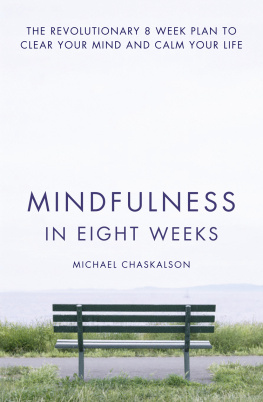
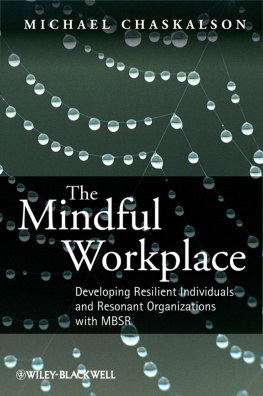
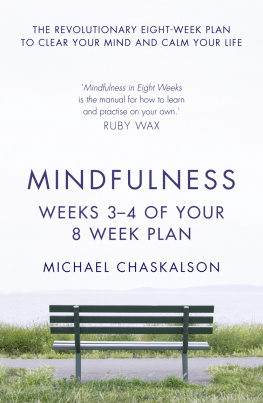
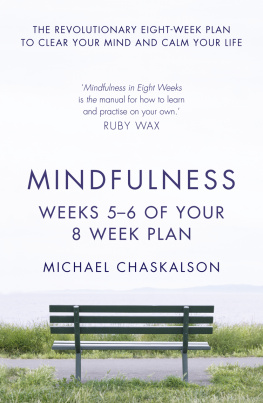
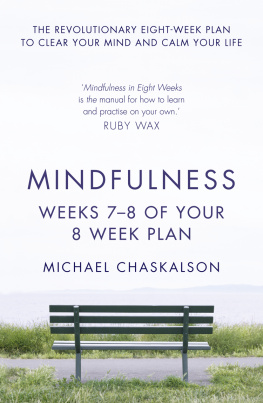
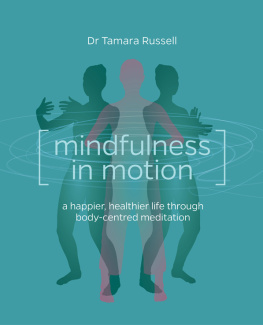
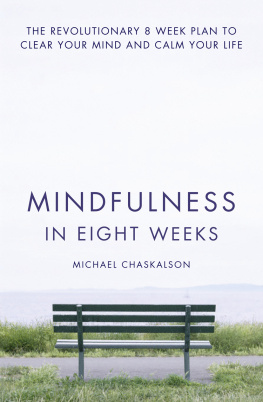



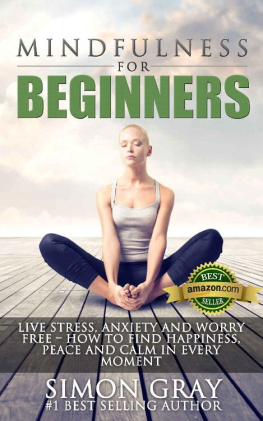
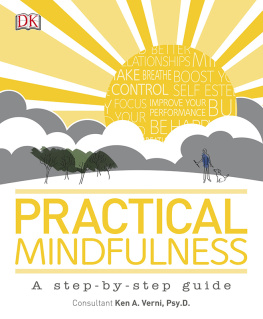
 1
1  15mins) on your audio player.
15mins) on your audio player. Box 1: The Raisin Exercise
Box 1: The Raisin Exercise